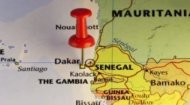|
Dakar Airport |
Dakar Airport |
Dakar Airport | Dakar Airport |
Explore all about the West African nation of Senegal in articles, pictures, videos and images.
More >
 |

|
Blaise Diagne Airport serves as the primary gateway for a diverse range of airlines, connecting Senegal to destinations across Africa, Europe, the Middle East, and beyond. As the hub for the national carrier, Air Senegal, AIBD plays a pivotal role in the airline's expansion of its regional and intercontinental network. Major international carriers operating out of AIBD include Air France, Brussels Airlines, Royal Air Maroc, Ethiopian Airlines, Turkish Airlines, Iberia, TAP Air Portugal, Emirates, and Kenya Airways, among others. These airlines provide direct connections to key global cities such as Paris, Brussels, Casablanca, Addis Ababa Ababa, Istanbul, Madrid, Lisbon, Dubai, and Nairobi. Regionally, AIBD is a vital link to West African capitals like Abidjan, Bamako, Conakry, and Lomé, fostering intra-African trade and travel. The presence of such a diverse portfolio of carriers underscores AIBD's growing importance as a strategic nexus in Africa's aviation landscape. Since its inauguration, Blaise Diagne Airport has demonstrated impressive growth in its facts and figures, particularly concerning passenger numbers. Constructed at an estimated cost of around $600 million, the airport was initially designed to handle 3 million passengers annually, with the potential for future expansion to accommodate up to 10 million. In its first full year of operation (2018), AIBD recorded approximately 2.2 million passengers, a strong start reflecting the immediate shift of traffic from LSS. This figure steadily increased to nearly 2.4 million passengers in 2019, showcasing consistent growth before the global disruption caused by the COVID-19 pandemic. Like airports worldwide, AIBD experienced a significant downturn in 2020, with passenger traffic dropping to around 1.1 million. However, the airport demonstrated resilience and a robust recovery, reaching approximately 1.5 million passengers in 2021 and surpassing its pre-pandemic levels in 2022, with passenger numbers exceeding 2.6 million. Current projections indicate that AIBD is well on track to exceed 5 million passengers in 2025, solidifying its position as one of West Africa's busiest and fastest-growing airports.
Beyond passenger traffic, AIBD also handles substantial cargo volumes, crucial for Senegal's import and export economy. While specific annual tonnage can fluctuate, the dedicated cargo facilities are designed to process thousands of tons of freight, supporting sectors like agriculture, fisheries, and manufacturing. The airport's strategic location also enhances its economic impact, creating thousands of direct and indirect jobs and stimulating development in the surrounding Thiès region. Blaise Diagne Airport represents a pivotal asset for Senegal's growth trajectory. Its modern facilities, expanding network of airlines, and impressive passenger numbers underscore its success as a major infrastructural project. While challenges such as optimizing ground transportation links and further enhancing the passenger experience remain ongoing, AIBD's management is committed to continuous improvement and expansion. As Senegal continues its drive towards economic emergence, AIBD is poised to play an even greater role as a regional aviation powerhouse. Its capacity for future growth, coupled with a strategic vision for enhanced connectivity and operational efficiency, ensures that Blaise Diagne Airport will remain a vital gateway, connecting Senegal to the global community and fostering prosperity for generations to come. |







